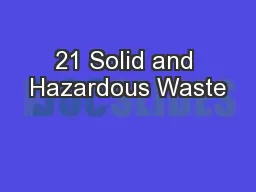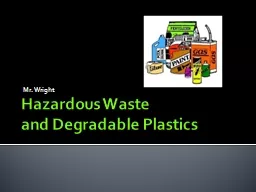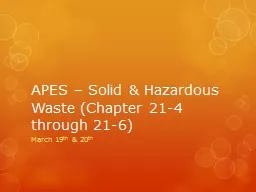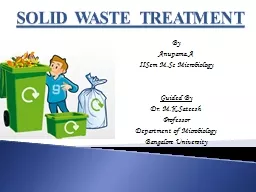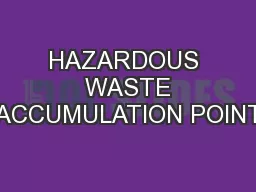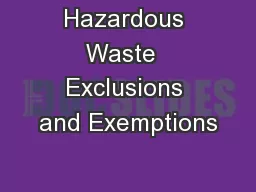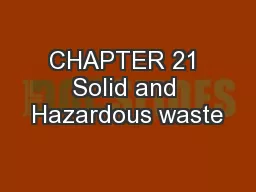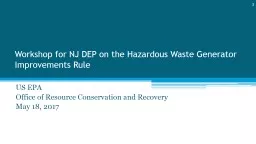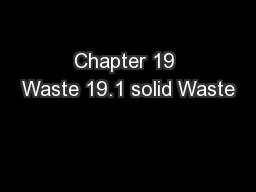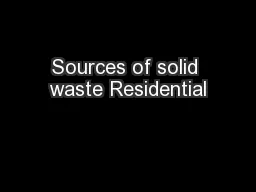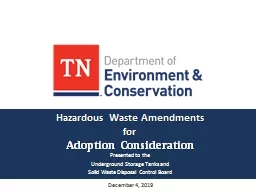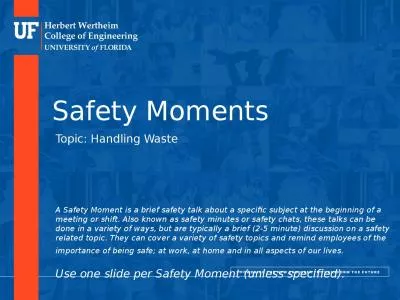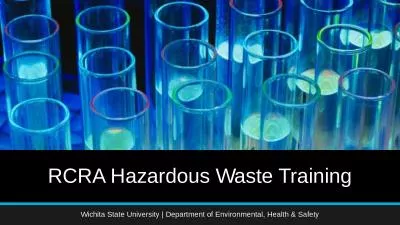PPT-21 Solid and Hazardous Waste
Author : ellena-manuel | Published Date : 2018-10-13
Electronic waste ewaste is the fastest growing solid waste problem Most ends up in landfills and incinerators Composition includes Highquality plastics Valuable
Presentation Embed Code
Download Presentation
Download Presentation The PPT/PDF document "21 Solid and Hazardous Waste" is the property of its rightful owner. Permission is granted to download and print the materials on this website for personal, non-commercial use only, and to display it on your personal computer provided you do not modify the materials and that you retain all copyright notices contained in the materials. By downloading content from our website, you accept the terms of this agreement.
21 Solid and Hazardous Waste: Transcript
Download Rules Of Document
"21 Solid and Hazardous Waste"The content belongs to its owner. You may download and print it for personal use, without modification, and keep all copyright notices. By downloading, you agree to these terms.
Related Documents

